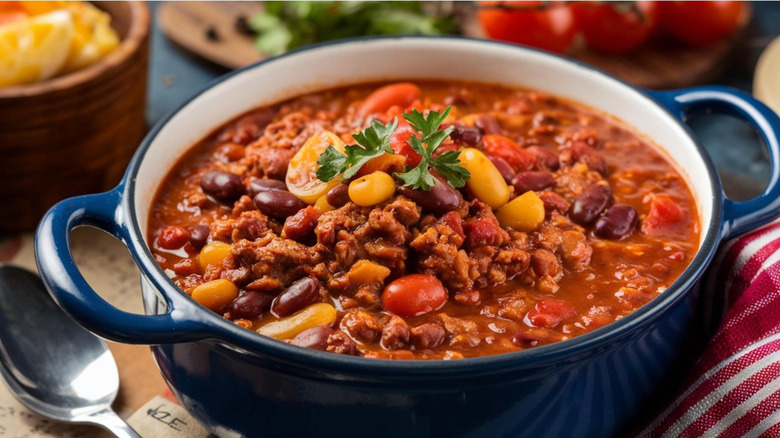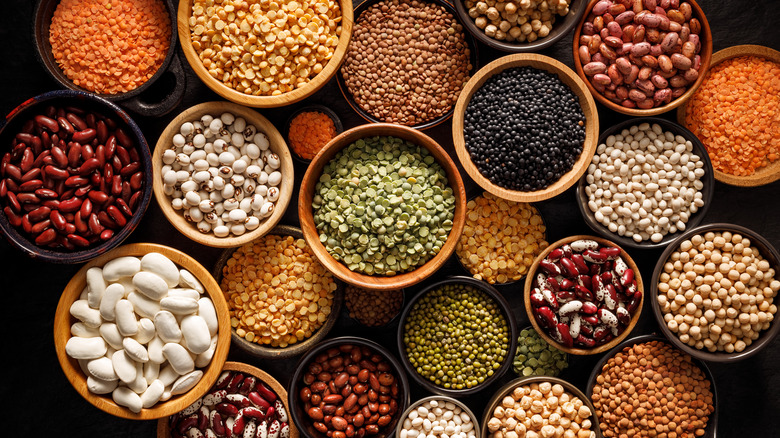The Absolute Best Beans To Put In Chili
We may receive a commission on purchases made from links.
If you're a Texan or a member of the International Chili Society, you might want to stop reading, because this is all about the best beans to go in a chili — which is a controversial topic for those groups. This contested stew contains many debated ingredients, as well as a rich history of Mexican and Spanish culinary traditions. Back in 1977, the Texas legislature actually passed a resolution making chili their state dish and it still stands today. Better known as chili con carne or "Texas Red," this version consists of cubed beef chuck in a red chile pepper and cumin-infused sauce. This means no beans, no tomatoes, no corn, or any kind of fillers that might distract from the essence of pure Texas beef.
But we here at The Takeout are on Team Bean and believe the fiber and flavor that come from beans is simply too good to pass up. Beans are also cheap, especially if you buy them dried, and are able to take on whatever seasoning you choose. If you're a bean snob, check out the heirloom varieties from Napa-based Rancho Gordo. It can be hard to know which legume to choose, but the most common chili-friendly beans are kidney, black, pinto, Great Northern, and cannellini.
If you're using canned beans, make sure to rinse them before use and check the sodium content before you start salting. Of course, the best beans for chili depends on your personal preference and the type of chili you're making, so let's break it down by style and taste.
The best bean depends on the chili variety
If you're cooking a classic chili that needs mass approval, you can't go wrong with kidney beans. They hold their shape well, so there's no danger of mush, and their hearty texture can stand up to chili's big bold flavors. If you want a creamier consistency, consider the black bean. They're slightly softer and smaller and add a faintly sweet and earthy flavor. For a more southwestern-style chili, check out the pinto bean. They're a bit larger than black beans but just as creamy and soft.
For a complete riff on the classic red chili, explore the world of white or green chilis. As evidenced by its name, this spicy stew uses white beans, such as Great Northern or cannellini. This variation was likely influenced by the popular Southwestern ingredients of green chiles, white beans, and chicken or turkey instead of beef. You'll often see it on menus in the southwestern U.S., especially in New Mexico, who considers itself the "chile capital of the world." Instead of tomatoes and red chili peppers, white or green chili uses, natch, green chiles in a broth-based sauce and is often topped with avocados, cilantro, and tortilla chips for added texture.
If you're finding it hard to choose between all these delicious and nutritious beans, try a combination. The colors and textures will add a pleasing contrast to an otherwise lumpy-looking stew. Just because Texans have strict rules on chili recipes doesn't mean you have to.

